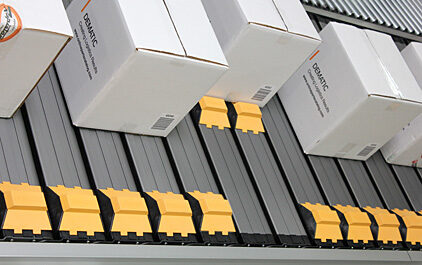Packaging plays an important role in ensuring the safety and shelf life of food products. Over the years, packaging technologies have evolved tremendously to meet the growing demands of consumers who want convenient and ready-to-eat options. One such innovative packaging solution that has enabled on-the-go eating is retort packaging.
What is Retort Packaging?
Retort packaging refers to a type of food packaging that can withstand high heat sterilization or pasteurization processes to clean and preserve the product without any refrigeration. In retort packaging, the food is sealed in a pouch or tray made of multilayer films such as plastic, aluminum foil or paper that can endure temperatures over 121°C. During the retorting process, the packaged food undergoes high temperature treatment for a specified period to kill any pathogens. This allows convenient foods to be shelf-stable for several months without refrigeration.
Advantages of Retort Packaging
Shelf Life Extension: Retort packaging eliminates the need for refrigeration, extending the shelf life of products from days to 6-24 months. This helps reduce food wastage.
Convenience: The packaged foods are ready-to-eat and can be consumed anywhere without any preparation, making them ideal for on-the-go lifestyles.
Food Safety: The high temperature sterilization process kills all microbes and pathogens, ensuring the packaged foods remain free from contamination and spoilage.
Tamper Evidence: Retort pouches are easy to seal, providing tamper evidence and proof against resealing once opened. This enhances consumer trust.
Varied Product Range: Almost any food item ranging from meats, seafood, meals, snacks, baby food and more can be retort packaged.
Cost Effectiveness: Retort packaging utilizes fewer resources compared to cans, helping reduce costs for manufacturers and environmental impact.
Evolution of Retort Packaging
Retort packaging has evolved significantly over the decades to cater to evolving market needs. Here are some key milestones in its development:
– 1960s: Introduction of steel packaging for retorted products requiring longer shelf life of 6-18 months like military rations.
– 1970s: Development of lightweight retort pouches made of laminated plastic films and foil for commercial food producers.
– 1980s: Introduction of multilayer laminate films with improved heat resistance and barrier properties allowing lower retort temperatures.
– 1990s: Adoption of aseptic retort packaging providing shelf life of 1-2 years without refrigeration.
– 2000s: Advances in high-barrier films, forming and filling equipment increased production efficiency. Modified atmosphere packaging gained popularity.
– Today: Active research on bio-based and recyclable materials. Introduction of vacuum retort packaging and automated sterilization lines with real-time monitoring.
Demand for Retort Packaging
The demand for retort packaging has witnessed strong growth over the last few decades driven by various macro trends:
Growing Working Population
With more people joining the workforce, demand has surged for convenient grab-and-go food solutions that do not require any preparation or refrigeration. Retort packaging addresses this need perfectly.
Increased Health Awareness
Consumers are increasingly health conscious and seeking nutritious ready meals and snacks packaged in retort pouches that provide the assurance of food safety.
Rise of Nuclear Families
With smaller family sizes and less time available for cooking, demand has grown for compact pouch-format retorted foods ready for quick consumption.
E-commerce Growth
The proliferation of e-grocery and food delivery services has boosted demand for shelf-stable retort packaged products suitable for online distribution and storage.
Travel and Outdoor Activities
Growing interest in travel, hiking, and other outdoor adventures has increased demand for lightweight, non-perishable retort packaged snack options.
Driven by these long-term trends, the global retort packaging market is projected to grow at 6-7% annually over the next five years according to several industry reports. The aseptic packaging segment is expected to witness the fastest growth.
Key Retort Food Categories
Following are some of the major food categories increasingly adopting retort packaging:
Meals: Complete meals like curries, pasta dishes, rice bowls and more in convenient single-serve pouches.
Seafood: Shrimps, fish fillets, surimi etc processed and packaged for longer shelf life.
Meats: Sliced, diced or shredded meat variants like chicken, pork and beef.
Snacks: Nuts, chips, cookies baked/fried snacks packaged in portion-controlled packages.
Baby Food: Complete baby meals, purees and cereals suitable from 6 months onwards.
Sauces & Spreads: Ketchup, mayo, jams etc in easy-squeeze pouches.
Prepared Foods: Pre-cooked pasta, rice, vegetables etc for stir frying or boiling.
Ready-to-Eat Meals: Complete ready meals requiring just heating before consumption.
Sustainability Benefits of Retort Packaging
Adoption of retort packaging also provides some key sustainability benefits compared to alternative packaging formats:
Lightweight & Compact: Retort pouches utilize 30-50% less packaging material than cans. Less storage and transport energy use.
Recyclable: Many bioplastics and renewable barrier materials being researched to develop recyclable retort packages.
No Refrigeration: Eliminates refrigeration requirement, saving energy during storage and distribution.
Less Food Waste: Longer shelf life ensures minimal food is wasted due to expiring before consumption.
To summarize, driven by compelling advantages like shelf-life extension, safety, and convenience; retort packaging has emerged as an innovative solution enabling the growth of the ready-to-eat food industry. With continued technological enhancements and rising consumer demand, the future certainly looks bright for this sustainable packaging
*Note:
1. Source: Coherent Market Insights, Public sources, Desk research
2. We have leveraged AI tools to mine information and compile it




